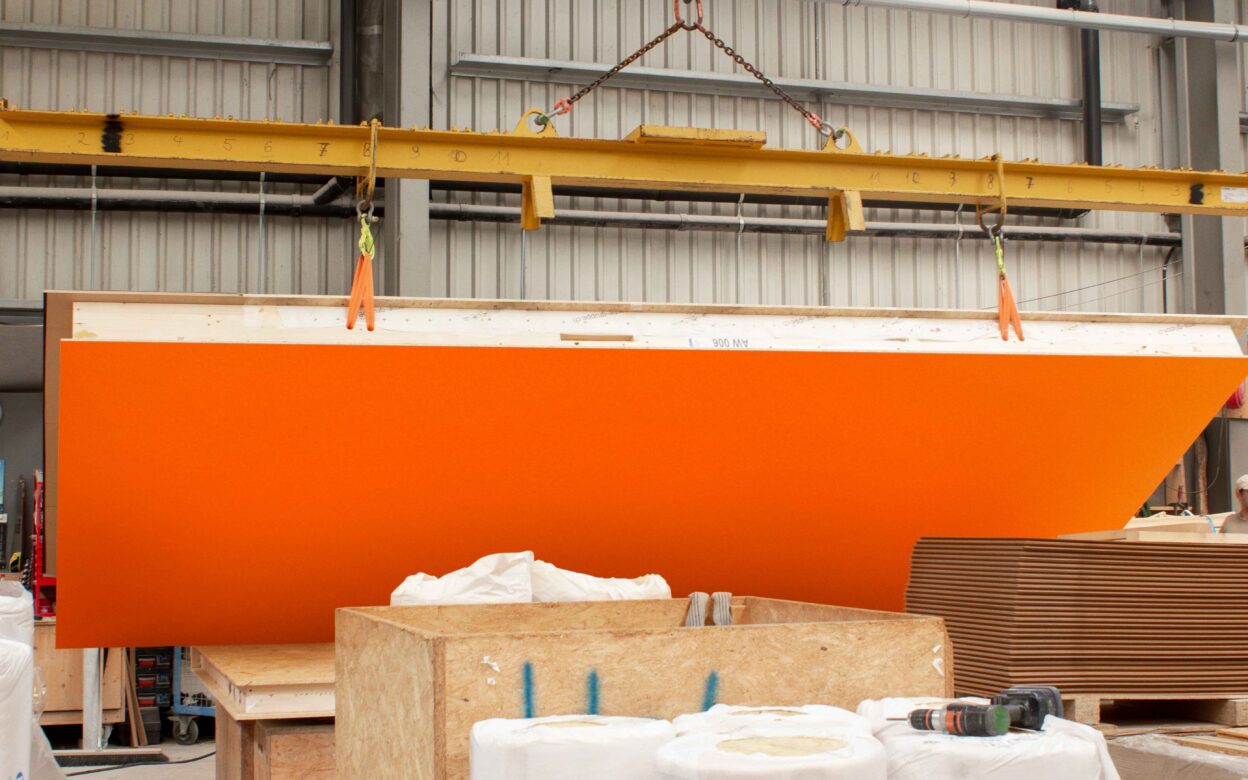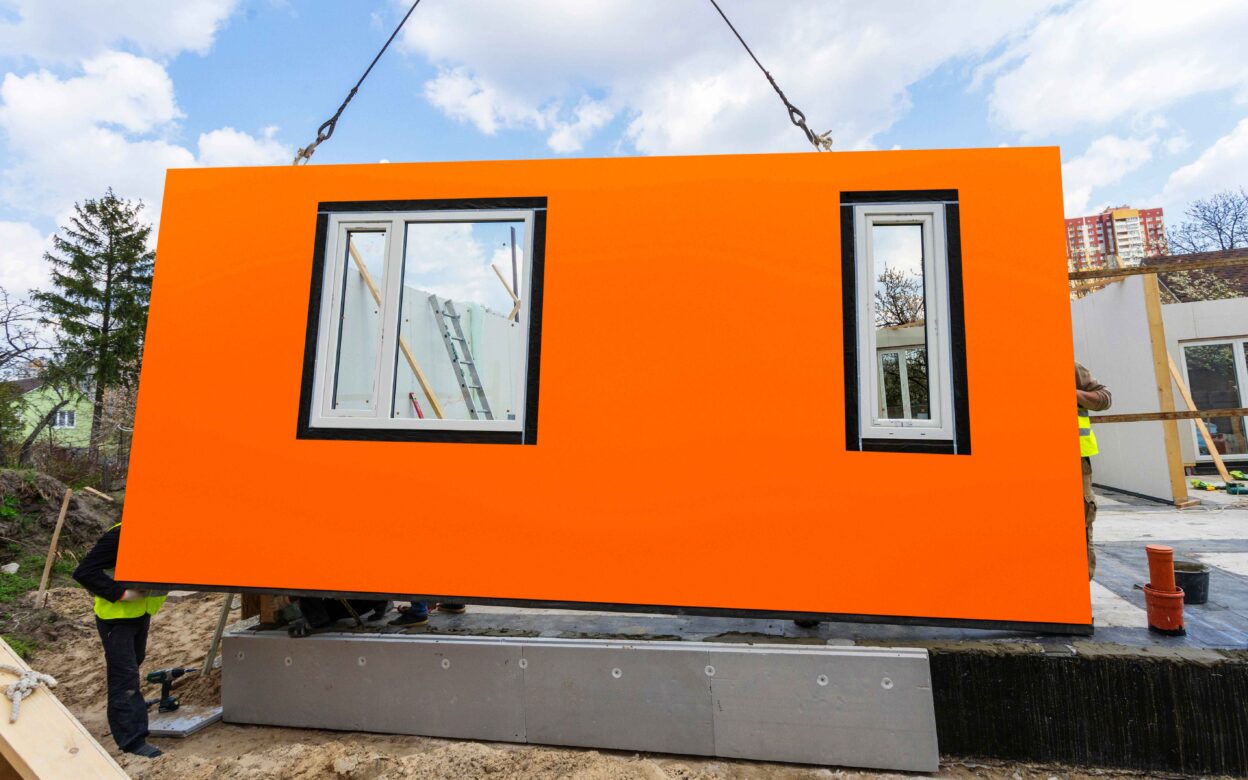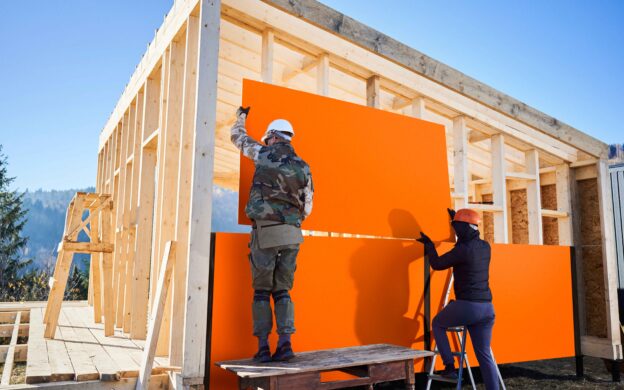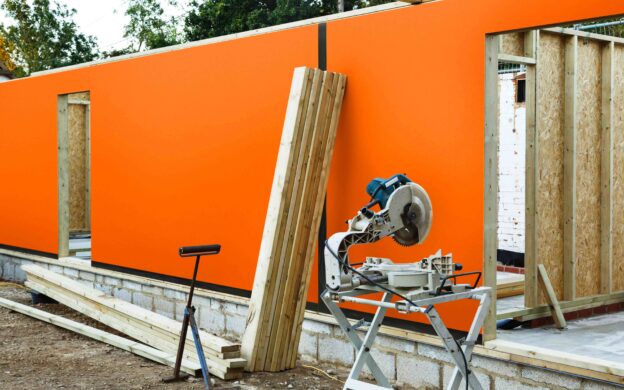
By constructing homes from SIP panels, housebuilders can benefit from faster programme times and less weather-related disruption. And at a time when homeowners are more aware than ever of energy costs and heating bills, a home built using SIP panels is likely to be an attractive option thanks to its excellent levels of insulation and airtightness.
SIP panels are manufactured offsite to deliver high-quality, precision-engineered products that use raw materials efficiently. They are capable of meeting and exceeding current building regulation requirements, especially in terms of conserving fuel and power. An added benefit of switching from masonry construction to timber construction is that housebuilders will be well-placed to meet requirements for lower embodied carbon, which are likely to be introduced in the future.
What long-term benefits do SIP panels offer?
One of the best illustrations of the benefits of SIP panels is their use in buildings constructed to the Passivhaus standard. The standard is characterised by high levels of insulation and airtightness (coupled with controlled ventilation), which SIP panels excel in providing.
This high standard of specification can lead to higher upfront material costs compared to ‘traditional’ construction. The additional benefits that come from using SIP panels more than offset those costs, however: panels are delivered to site ready to be installed, resulting in a shorter programme for the erection of the structure.
The home is watertight sooner too, allowing follow-on trades to commence with their work. Overall, homes constructed from SIP panels can be delivered in a much-reduced timeframe and – as the Passivhaus-standard projects show – they can reliably provide occupants with high levels of comfort and low running costs for the building’s entire life.

What are some of the environmental benefits of building with timber?
Offsite manufacturing of SIP panels uses material more efficiently and leads to faster construction on site, saving upfront carbon emissions. Panels assembled offsite are precisely engineered compared to solutions improvised on site, helping to reduce the likelihood of a performance gap between design intent and real-world performance, reducing in-use emissions.
There are also carbon benefits to using timber as a construction material, compared to the energy intense processes associated with cement and concrete for masonry construction. Timber buildings can be considered a carbon store, as trees take in (sequester) carbon dioxide as they grow.
While the correct ‘accounting’ for this stored carbon can be subject to debate when assessing the whole life carbon of timber buildings, it is generally recognised that more timber construction will help to lower the built environment’s overall emissions.
Timber SIP panel construction can therefore deliver high-quality, long-lasting buildings with low operational emissions and low embodied emissions.
How do integrated vapour-permeable overlays for OSB sheathing boards benefit SIP panels?
For the manufacturing and performance benefits of SIP panel construction to be fully realised on site, panels must be protected from the elements once they are installed. The speed of timber construction helps to guard against the worst of British weather, but panels still need protecting from rain and dirt.
Arctek® Dryshell™ is a vapour-permeable overlay for OSB sheathing boards, used in SIP panels, roof cassettes and wall cassettes. The proprietary layer is bonded to OSB before being delivered to the SIP panel manufacturer, creating a product that is moisture resistant and vapour permeable.
SIP panels are manufactured and delivered to site with the overlay in place, and once installed and taped as per the manufacturers guidelines, moisture and dirt can’t penetrate into the system which could have a potentially detrimental effect on performance.
This is in contrast to site-applied housewrap products which require extra time and cost to install, however experienced the installer. Tricky installation details and nailing/stapling can result in rips or tears, potentially allowing dirt and rain into the panel.
By choosing Arctek® Dryshell™, timber framed housing manufacturers and suppliers can make improvements to their processes and take greater advantage of the growing timber frame market in the UK. To find out more about how Arctek® Dryshell™ can benefit your timber framed housebuilding projects, request a sample or contact us with an enquiry.


